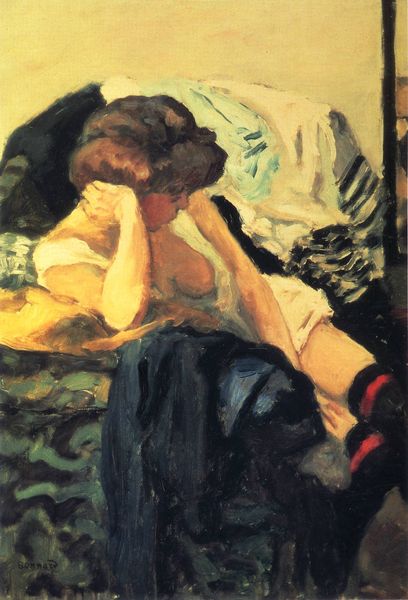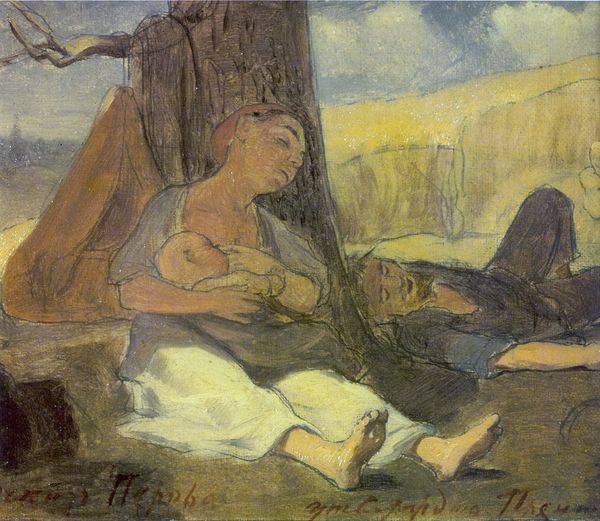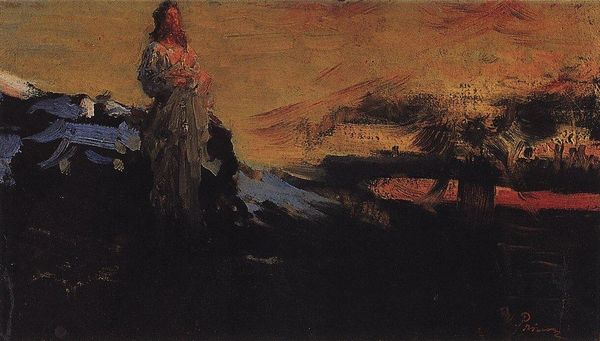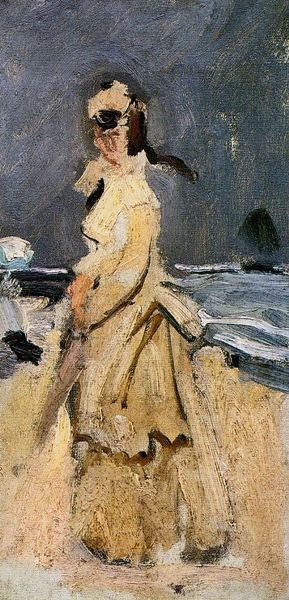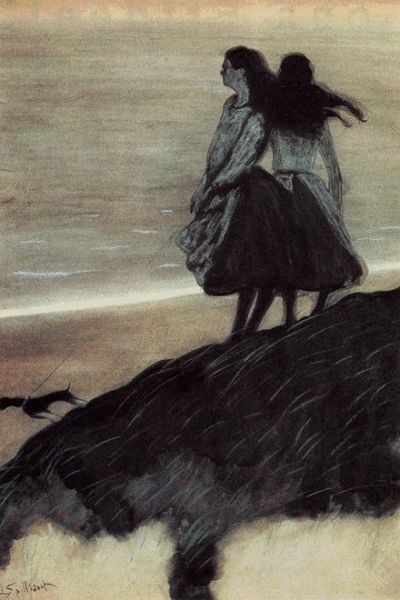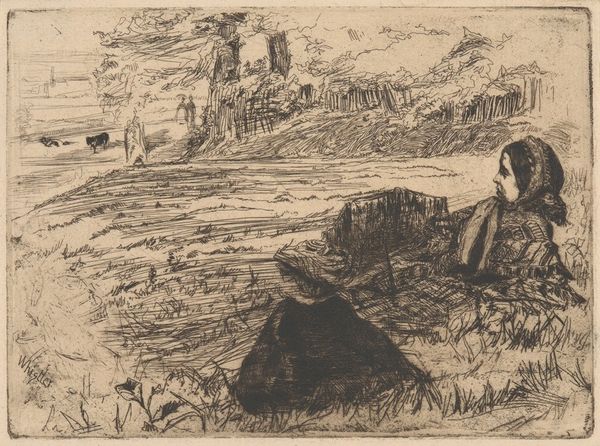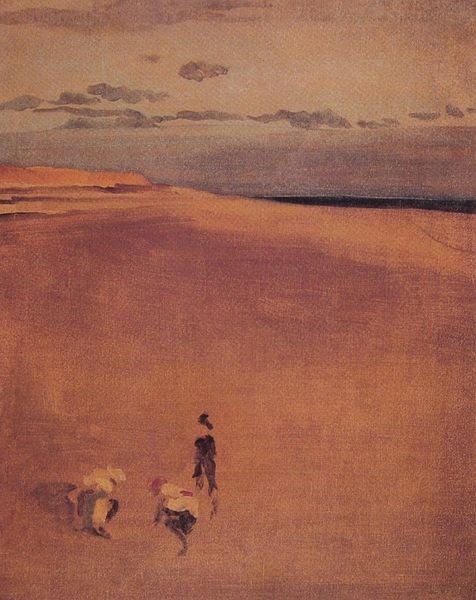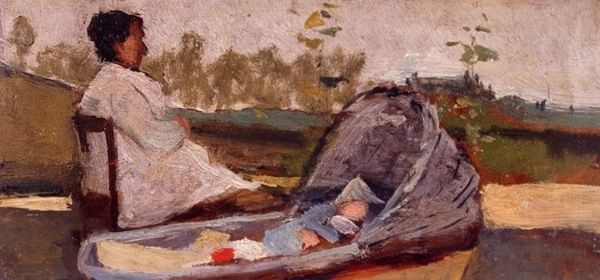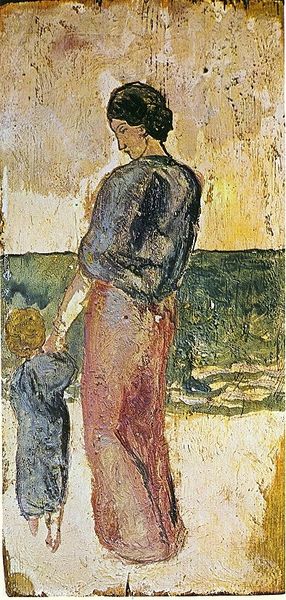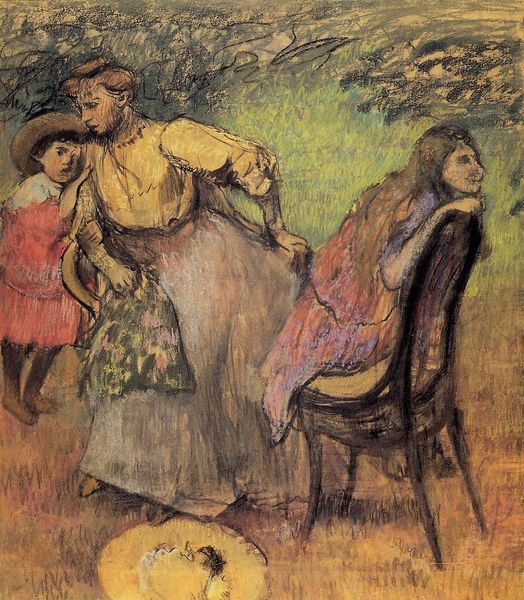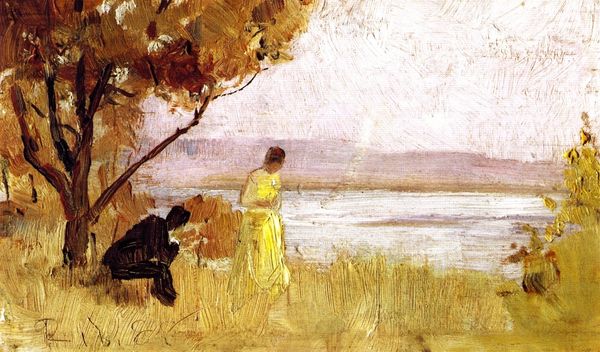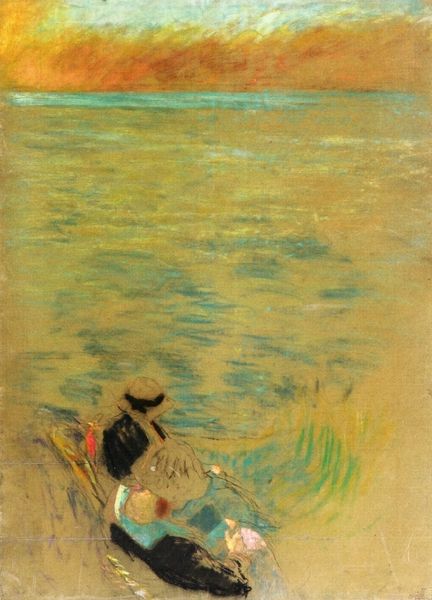
painting, plein-air, oil-paint
#
portrait
#
painting
#
impressionism
#
plein-air
#
oil-paint
#
landscape
#
painted
#
figuration
#
oil painting
#
genre-painting
#
lady
#
realism
Dimensions: 10 x 22 cm
Copyright: Public domain
Curator: Before us, we have Giovanni Fattori’s "Lady Sitting Outdoors," an oil-on-panel work from 1866. Editor: It strikes me immediately with its almost nonchalant brushstrokes. It's relaxed and seems utterly unconcerned with high society portrait conventions. The material reality of paint dominates the scene. Curator: Indeed. Fattori, aligned with the Macchiaioli movement, was keen to depict everyday life outside of academic constraints. There’s a distinctly modern feel to this, capturing a woman, presumably from the bourgeoisie, in leisure. But let's think about her specific positioning, alone in nature. It suggests a kind of independence, doesn’t it? One must question to what degree, being this was still quite socially constrained in the mid 19th Century. Editor: I agree there's a tension. The apparent freedom suggested by plein-air painting confronts the limitations of gender and class at that time. The textures are captivating; see how roughly the landscape is suggested, versus the comparative attention given to the fabric of her dress. It looks more "finished." It calls attention to its means of production – a privileged product for privileged people! Curator: The way light is used adds to this tension. It glances off her parasol, which in turn, casts some shadow across the woman, giving some dimension. It also, quite literally, protects her from something which working class women out in the country did not have to hand to offer such shelter from the sun. The act of sitting like that, not tending land, not in the midst of productive labour… It is a loaded visual shorthand that implies wealth. Editor: Precisely! We can consider the pigment choices, the weave of the panel he selected as part of a socio-political statement through these methods of crafting and deploying such paints. The seemingly casual technique deliberately subverts traditional art's polished illusions. This wasn't just about replicating the scene; it was about highlighting a social position and material circumstance. Curator: So, both the lady and the method underscore access to a privileged kind of experience – freedom from certain expectations and labors which are, essentially, unattainable for most people at this time. It provokes questions about identity and spectatorship as the landscape genre gets infused with portraiture to showcase a bourgeois female figure in a moment of what? Reflection? Boredom? Editor: For me, the materiality serves the context in a poignant way. A record, perhaps even unwittingly on Fattori's part, of 1866 society captured within the layering of each brushstroke and their ultimate arrangement into this image of a single lady taking a pause in a painted, landed estate. Curator: Thanks, that’s given me cause for further reflection and research! Editor: My pleasure. I appreciate thinking about her – her placement, and what surrounds her – from your point of view, too.
Comments
No comments
Be the first to comment and join the conversation on the ultimate creative platform.
